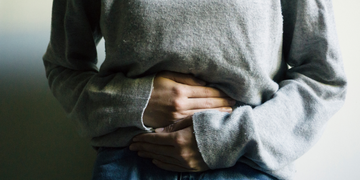Can birth control help with fibroids?

Uterine fibroids can be painful — they can cause pelvic pain, abdominal pressure, heavy menstrual bleeding, and can lead to complications during pregnancy. Since many of these symptoms are similar to what you might experience during your period, you may be wondering if hormonal birth control can help to alleviate discomfort caused by fibroids. In this article, we’ll review what uterine fibroids are and how hormonal birth control may be able to help.
What are uterine fibroids?
Uterine fibroids are noncancerous growths that can grow on and inside your uterus. They are not associated with an increased risk of cancer, but they can cause pain or discomfort. Uterine fibroids are common, but not all will experience symptoms. Whether you experience uterine fibroid symptoms may depend on the size, number, and location of the fibroids.
Possible symptoms of fibroids can include:
- More menstrual bleeding: Either in the number of days you experience bleeding or a higher intensity of bleeding
- Anemia: This can be due to heavier menstrual bleeding
- Pressure and pain in your pelvis: This is common particularly when you have larger fibroids
- Feeling like you have to pee: Fibroids may be pressing against your bladder to cause this.
- Constipation: Similarly, when a fibroid presses on your rectum, it can lead to constipation
- Fertility and pregnancy complications: Fibroids can affect the shape of your uterus, which can impact trying to get pregnant or pregnancy.
After menopause, you have reduced hormone levels, and symptoms may become less severe as a result.
Does birth control help with uterine fibroids or make fibroid growth worse?
While female sex hormones like estrogen seem to be linked to fibroid growth, it may be possible to reduce the size of fibroids with some types of hormone therapy (like those using Gonadotropin-releasing hormone). However, higher concentrations of estrogen and progesterone might make fibroids larger. If you currently are taking hormonal birth control, stopping hormonal treatments may help reduce their size.
On the other hand, your doctor may prescribe birth control to help control bleeding and anemia caused by fibroids. Low-dose birth control shouldn’t impact the size of the fibroids, but it can help control some of the symptoms of uterine fibroids, such as menstrual bleeding and cramping.
Consult with your primary care physician to determine the best course for your situation and medical history.
Can birth control be used as a treatment for fibroids?
Contraceptive methods such as the birth control pill or IUD may ease uterine fibroid symptoms because some of the symptoms are also associated with menstrual regulation. Although birth control can temper symptoms, it won’t change the size of the fibroid and can potentially increase the fibroids size.
Birth control options for fibroids
Hormonal intrauterine devices (IUDs)
Hormonal IUDs are inserted into the uterus by an OBGYN and can remain for up to five years. Although the IUD makes for a very effective form of birth control, it’s only suitable for treating smaller fibroids.
When fibroids are too large, they can change the shape of the uterus, and an IUD won’t be able to be successfully inserted. Although the IUD isn’t capable of shrinking the fibroids, the hormones may lower the amount of blood lost during menstruation and prevent anemia.
Birth control pills
It is unclear how effective birth control can be for treating uterine fibroids. Low-dose birth control pills don’t seem to impact the size of the fibroids, but they might help ease uncomfortable side effects.
Other treatments for fibroids
Before resorting to surgical methods, your primary care provider may recommend certain medications. Treatments that may minimize uncomfortable symptoms or help shrink or remove uterine fibroids include:
- Nonsteroidal anti-inflammatory drugs (NSAIDs): Using medications such as ibuprofen and naproxen may reduce menstrual pain.
- Vitamins and iron supplements: These are typically used to help manage anemia.
- Gonadotropin-releasing hormone (GnRH) analogs: GnRH antagonists and GnRH agonists temporarily stop ovarian production of estrogen and progesterone.
- Myomectomy: This is a type of surgery used to remove fibroids. Newer methods involve using MRI technology to target the fibroids to shrink or destroy them. Types of myomectomies include abdominal myomectomy, laparoscopic myomectomy, and hysteroscopic myomectomy.
- Endometrial ablation: Destroying the uterine lining reduces bleeding associated with small fibroids.
- Fibroid embolization: Polyvinyl alcohol (PVA) is injected into your arteries to block the blood supply to the fibroids, shrinking them. Although it’s not surgery, you may have to spend a few nights at the hospital due to nausea, vomiting, and pain.
- Hysterectomy: This is a surgical procedure used to remove the uterus. Various factors determine which type of hysterectomy is best to use. Possible approaches include removing the uterus through the vagina or the lower abdomen. After a hysterectomy, you’ll no longer be able to get pregnant.
If you’re looking to manage fibroid symptoms, discuss your options with your primary care provider to find the solution that works best.
Questions? We’re here for you, every step of the way. Reach out at hi@hellowinx.com to get started.
Keep Reading

What causes uterine fibroids in women?
Jan 10

What every woman should know about fibroid tumors
Sep 19

What causes pelvic pain in women?
Oct 25








